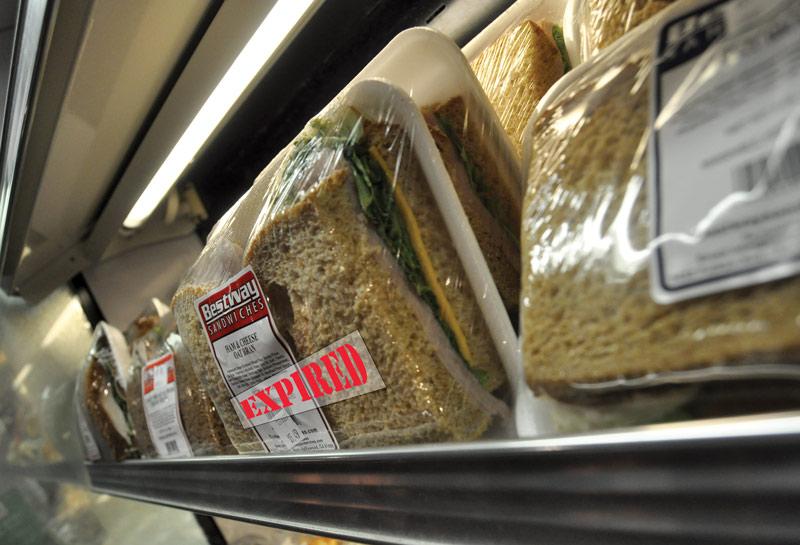
The following students from professor Linda Bowen’s Spring 2009 Journalism 410 class contributed to the story:
Reporters: Samantha Minton, Kristyn Fryrear, Robert Cisneros, Casey Rowley, Tiaira Nowlin, Cynthia Martinez, Mariana Enriquez, Shayla Selva, Gail Moscoso
Diced bell peppers, green onions, peanuts and zucchini, tossed together with spicy chicken are the main ingredients for Kung Pao Chicken.
Combine it with a heap of chow mein, and you have what used to be Guisou Akhayan’s favorite meal between classes.
The food had always tasted OK to the junior communications major, and Akhayan said she bought it mainly for its convenience. But what changed her mind about dining there again actually happened after she finished eating.
At first, she didn’t think too much of the stomach aches, so she dined there again, she said. She came to regret that decision when she suddenly had to leave her COMS 360 class because the pain had turned to nausea.
“I threw up. Panda (Express) and me don’t mix very well.” Akhayan said in an e-mail. She doesn’t plan on returning to the campus eatery, one of 10 offering full meals. “No, of course I don’t. I don’t want to get sick.”
Akhayan isn’t the only one left feeling sick from the eatery. Senior Nina Jaworowski said in an e-mail, “The food on campus is not very good, I felt sick when I ate at Panda twice. Since that happened, I never eat Panda again on campus.”
Being an athlete makes Jaworowski even more aware of the quality of food. “Healthy food is very important when you are an athlete, and since that incident happened to me, I am especially careful with what I am eating.”
The Student Health Center said they do not keep track of the ailments patients are seen or treated for and could not provide any information regarding food borne illnesses such as Salmonella, Hepatitis A or Cholera.
The Los Angeles County Department of Public Health (LACDPH) conducted a routine inspection at Panda Express in February and received the highest rating of all the 21 eateries and stores on campus. The only violation was for a broken rice warmer handle, resulting in a score of 99 out of 100.
All of the other food vendors and outlets on campus, from kitchens and cafes to markets and snack bars, all scored lower than Panda Express, but still received the coveted ‘A’ rating.
However, online reports show that some places have not been inspected by the health department in more than two years.
This violates laws requiring health inspectors to check all food vendors at least three times a year, according to Los Angeles County Environmental Health.
An official from the West Valley District Office said in a phone interview that the health inspectors are behind on work and only have time to check high risk places. He said inspectors are supposed to look over kitchens every three months.
Some campus restaurant inspections are up to date, such as at The University Club, but managers failed to present a current report when asked. They either said they weren’t allowed to, or it was not available at the moment.
A majority of the employees on campus eateries were unaware that they had to show inspection reports by law.
According to the LACDPH Web site, Retail Food Official Inspection Reports are issued annually to ensure “safe and wholesome food.” Everything is inspected from the cleanliness of the ceilings to the temperatures of running water.
Is CSUN delivering safe and wholesome food effectively throughout its campus eateries? Journalism students in an advanced reporting class compiled the following content regarding food safety on campus during a three-month-long investigation. The results included health code violations, improper expiration dates and more.
Many of the campus eateries have encountered problems. The following violations are from the most recent reports compiled by county health officials and posted on the Environmental Health Department’s Web site and from copies of the reports we have gathered.
Depending on the type of meat, dairy product or other food substance, being too hot or too cold by just a few degrees can mean all the difference between a safe and unsafe meal. The bacteria in meat makes it a potentially hazardous food, and therefore it must be frozen in storage or hot enough to serve. According to the most recent inspection reports, Subway did not meet the standards for chicken and The Pub did the same with ground beef.
The Arbor Grill and University Club had similar problems. If a restaurant violates a standard, training is provided so improvements can be made. The next inspection will show any progress or downfalls, but there is no guarantee of another one within at least a year.
Food inspectors found bacteria at the Matador Food Court’s Freudian Sip last year. According to the inspection reports, mildew and mold were growing in the ice machines while countertops remained unclean. Bacteria resulting from unkempt food, employees, customers or equipment can put safety at great risk.
The coffee machines had not been cleaned for so long that food became encrusted around the dispenser nozzles. Equipment also needed to be repaired or replaced.
The Mercantile Exchange convenience store near Subway was last inspected more than a year ago and was found to have no soap at the employee hand-washing sink.




